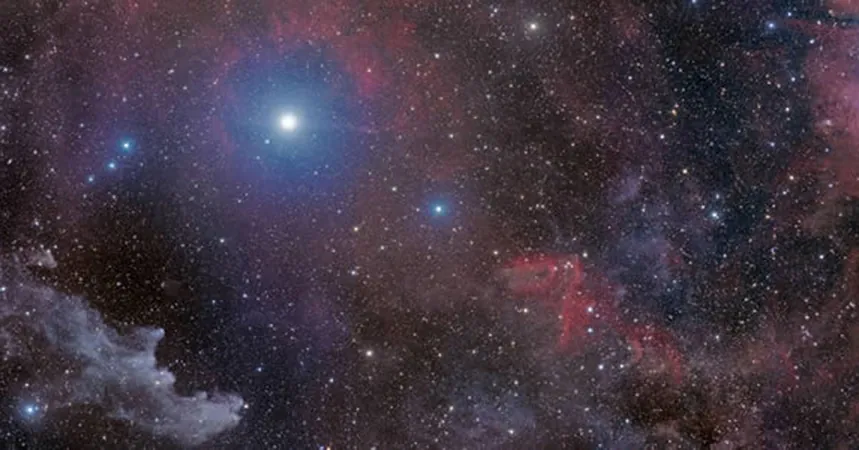
Discover the Secrets of Bioluminescence in the Rare Red Sea Fish!
2025-03-26
Author: Wei Ling
In the mysterious world of marine life, bioluminescence— the ability of living organisms to produce light— has evolved around 27 times among various fish species in their long history. This dazzling evolutionary trick serves vital functions such as luring prey, communicating with others, and even finding a mate.
A groundbreaking study published in *Ichthyological Research* has shed new light on the unique bioluminescent capabilities of the rare fish species *Vinciguerria mabahiss*, which hails from the enigmatic depths of the Red Sea. This research marks the first comprehensive examination of the light-producing organs in this elusive fish, unlocking essential information about their structure and functional use, thus laying the groundwork for future aquatic research.
Dr. Todd Clardy, the lead author and Collections Manager of Ichthyology at the Natural History Museum of Los Angeles County, emphasizes the variety of ways fish exploit light in their natural habitats. "Our goal was to determine how *V. mabahiss* utilizes its bioluminescence," he explains. Interestingly, instead of merely using light to attract attention like the infamous anglerfish, the *V. mabahiss* employs its glow as a sophisticated form of camouflage known as counterillumination.
Imagine swimming through the ocean's depths and relying on light to hide rather than to hunt! "We live in a two-dimensional world," says Clardy, "but fish are constantly aware of shadows above them—whether those shadows indicate food or potential predators." Through counterillumination, *V. mabahiss* utilizes its bioluminescent abilities to blend in seamlessly with the filtered light from above, making it nearly invisible to any lurking predators searching for a meal.
Research demonstrated that *V. mabahiss* features between 140 and 144 strategically positioned photophores, or light-producing organs, whose sizes vary but all point downward. This arrangement is vital, as it allows the fish to cast blue light that effectively breaks up its silhouette against the illuminated ocean surface, providing an effective anti-predator strategy. The researchers closely examined five juvenile specimens to gain insights into the utilization of their light.
Despite the diversity in photophore sizes, a remarkable finding was that all shared a similar structural foundation. The light is produced via a well-understood bacterial reaction, while the intricate design of the photophores helps direct the resulting bioluminescence for maximum camouflage effectiveness. Clardy elaborates, "Their photophores have a thick pigment layer to prevent excess light from escaping, reflective cells that enhance the light output, and a lens that perfectly channels the light outward."
*Vinciguerria mabahiss*, a small inhabitant of the deep waters of the Red Sea, remains shrouded in mystery as it has yet to garner a common name due to its rarity and elusive nature. As research continues, the findings from this study provide invaluable knowledge that will pave the way for future investigations into fish bioluminescence and its ecological significance. Dive into the wonders of the ocean, and who knows? You might just encounter the enchanting *V. mabahiss* hiding in the depths, employing its light to dance between visibility and obscurity!




 Brasil (PT)
Brasil (PT)
 Canada (EN)
Canada (EN)
 Chile (ES)
Chile (ES)
 Česko (CS)
Česko (CS)
 대한민국 (KO)
대한민국 (KO)
 España (ES)
España (ES)
 France (FR)
France (FR)
 Hong Kong (EN)
Hong Kong (EN)
 Italia (IT)
Italia (IT)
 日本 (JA)
日本 (JA)
 Magyarország (HU)
Magyarország (HU)
 Norge (NO)
Norge (NO)
 Polska (PL)
Polska (PL)
 Schweiz (DE)
Schweiz (DE)
 Singapore (EN)
Singapore (EN)
 Sverige (SV)
Sverige (SV)
 Suomi (FI)
Suomi (FI)
 Türkiye (TR)
Türkiye (TR)
 الإمارات العربية المتحدة (AR)
الإمارات العربية المتحدة (AR)